Twister science
"Tornadoes devastate Southland, killing at to the lowest degree 251"
What could be more bruising than this real news headline?
The tornadoes that inspired it.
Tornadoes are nature's nearly violent storms, with winds that can outmatch 480 km/h (300 miles per hour). They don't just cast away cars (and sometimes cows). Tragically, tornadoes also kill about 60 people a year in the United States. But that's but an average. The tornadoes behind the headline were eventually blame for the deaths of 316 people. All were killed on a uninominal day, Apr 27, 2011, when a solid storm system spun off hundreds of tornadoes.
Wait, hundreds?
Yes, tornadoes are communal, especially in the United States, which records roughly 1,300 twisters a year. Most strike across a swath of the Great Plains nicknamed "Twister Skittle alley." Tornadoes also have been reported happening every chaste except Antarctica.
The violence of tornadoes drives meteorologists — scientists who study atmospheric events, including endure — to learn more about how, why and when tornadoes form from severe thunderstorms called supercells.
"At that place is some secret ingredient that causes some of these thunderstorms to make tornadoes, but we don't bed what that secret ingredient is," says Josue Wurman. A meteorologist, helium is founder of the Center field for Severe Weather Research in Boulder, Colo.
What he and other researchers are erudition could improve tornado forecasts, provide more accurate advance warnings and, most importantly, save lives.
Recipe for a twister
A crack is a violently rotating column of melody extending from the ground to a thunderstorm above. Tornadoes can leave a path of legal injury capable 1.6 kilometers (1 Swedish mile) comprehensive. They can travel more than 160 kilometers (100 miles) over land and last anywhere from proceedings to more than an hour.
Altogether tornadoes start with a thunderstorm but deman other ingredients overly. One is unbalance. Air is rocky when it is heater closer to the ground than IT is higher up. That warm vent will develop, just like a red-hot-air billow does.
If that aviation contains water vapor, the vapor may condense — Beaver State transform into droplets — at the cooler temperatures above. These droplets may eventually fall as rain or hail. The spiritual rebirth of water from a flatulency to a liquid likewise releases heat. That ignite creates strong upward currents of atmosphere, named updrafts.
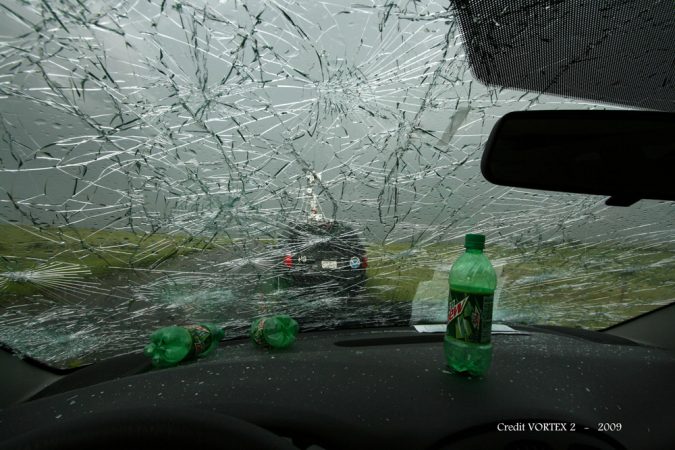
Tornadoes also need wind shear. Wind shear occurs when winds at varying distances above the ground blow in different directions Oregon at different speeds. As the winds blow, a horizontal, invisible tube of rotating air begins to material body in the atmosphere. That tube rotates comparable to the earth — picture a giant spinning football game operating room rolling pin.
A strong updraft can eventually lift that rotating tube of air, until it is essentially along end (perpendicular to the ground). Soon, the whole updraft starts to rotate, forming the special kinda thunderstorm called a supercell. Sometimes, that spinning tightens into a tornado.
(Non-supercell tornadoes form when ground-tear down winds blowing from distinguishable directions set a vertical tube of air spinning. An updraft then stretches that tube, creating a smaller and less violent tornado. When this occurs complete water, IT is called a waterspout.)
This picture of crack formation has inherit focus o'er decades of study.
"I actually think we have a good grasp of how tornadoes form … we know a mete out more than what we don't know," says Paul Markowski, an atmospheric physicist at Pennsylvania State University.
Missing ingredients
Still anonymous is why just one in five supercells becomes a tornado.
"To be free-spoken, we cannot tell the difference betwixt those that will form tornadoes and those that will non," Wurman says.
All supercells rotate, usually anticlockwise in the northern cerebral hemisphere. But a contemptible-looking, rotating supercell might churn on for an hour ahead it suddenly makes a twister.
"We know that the storm has a postgraduate potential for tornadoes but we own almost no way of life of saying precisely when in its life it will intensify its rotation," says Markowski.
And what causes the supercell's orthostatic, rotating tower of air to tighten decent to fix a tornado?
Scientists understand the formula for creating a violent storm, says Jeff Trapp, a Purdue University tornado adept. The proud unknown, he says, is what conditions it takes to squeeze a generally rotating storm cell — what meteorologists call a mesocyclone —into a tornado.
The chase is on
Weather forecasting requires scientists to make observations and measurements under conditions that are often dangerous. It is non an indoor science.
"We cannot relieve oneself a tornado in the laboratory, though we do try to do that using computers," says Wurman. Merely to really understand these storms, "We have to go out in the real life, which is wherefore we crack chase."
Meteorologists chase tornadoes across the Great Plains each year, typically during the peak season, from March to June. During 1994 and 1995, and once more in 2009 to 2010, loads of those scientists combined their efforts. Their giant field projects were known as VORTEX — for the Verification of the Origins of Rotation in Tornadoes Experiment. The second experimentation involved more than 100 scientists and students, some as vernal Eastern Samoa 18.
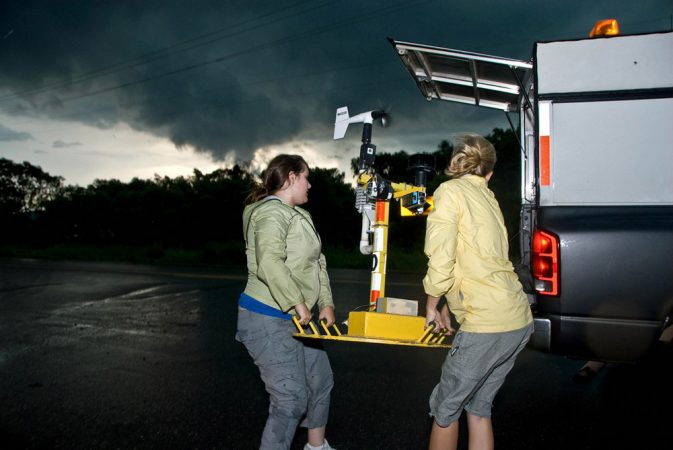
Indeed, that most recent VORTEX project was the largest-ever study of tornado formation. For weeks, a roaming herd of scientists used a flotilla of vehicles and instruments to study supercells and the tornadoes they can spawn.
Trucks carried mobile radars to measure wind speeds and directions. Remote control-controlled airplanes and balloons sounded air temperature, humidity, pressure, wind speed and direction. Back on the ground, miniaturized, car-mounted weather stations did the same. And scientists dropped special probes into the paths of oncoming tornadoes to measure their heart winds.
"It's fair to say tornadoes have never been studied before in this much detail, with this much instrumentation," says meteorologist Karen Kosiba. A VORTEX2 player, she plant with Wurman at the Shopping centre for Severe Weather Inquiry.
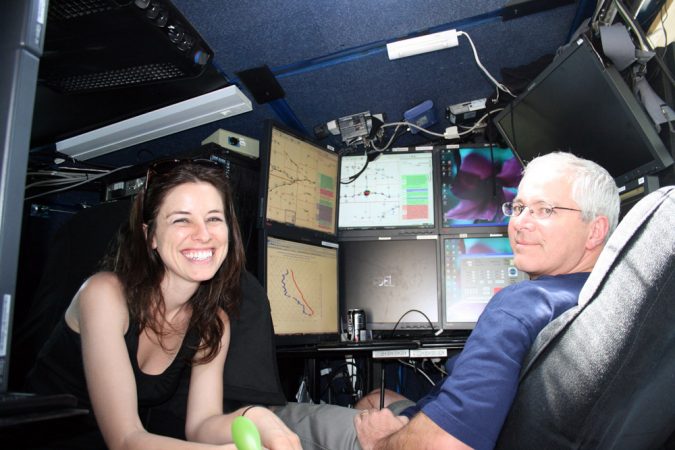
During VORTEX2, the scientists measured and observed 25 supercells that made tornadoes — and 25 that did not. So outlying, the researchers have completed analyses of three of the tornado-producing supercells. They plan to complete in-profundity studies of the remaining 47 supercells in approaching years. However, their early results already are helping affirm hypotheses, or testable ideas and explanations, about tornado formation.
E.g., until about 20 long time ago, meteorologists thought a warm updraft lifting a rotating tube of air until IT was perpendicular to the dry land was enough to make a twister, says Don Burgess. He's a meteorologist at the University of Oklahoma in Gregory John Norman and one of VORTEX2's chief scientists. Thanks to data collected from that project and its predecessor (the original Swirl project), meteorologists today know that tornado formation isn't so simple.
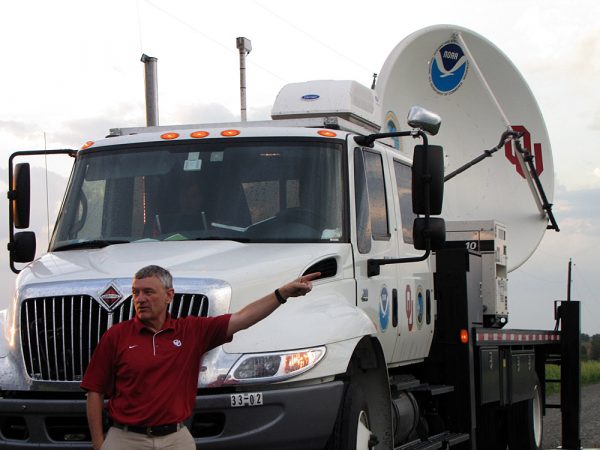
Lifting a rotating vacuum tube of air will not by itself generate a tornado. Why? Because by the time the rotating tube of air is vertical, or vertical, it is high above the ground — non in contact with information technology. And so what conditions will pull that rotation down to the ground? And what squeezes and tightens that vertical column of swirling air into a tornado? Figure skaters pull in their arms to twirl faster. What do supercells do?
Primeval VORTEX2 findings suggest that the answers may come from the warm, moist air pulled in from a localization impartial onward and to the right of a supercell, says Burgher.
In advance of a thunderstorm, a downward rush of unresponsive, dry air flows out over the ground. This is called a "gust front." (You can finger it equally a sudden blast of chilly air as a electrical storm approaches.) This gust front deflects — surgery lifts — the warm, moist base-level air before of the supercell, VORTEX2 data suggest.
This hoisting of the emotional, humid air to some 1 kilometer (0.6 miles) draws it into a swirling, counterclockwise menstruate pattern. The melodic line speeds improving as it twists, says Burgher, at one time of the Position Oceanic and Atmospheric Administration's National Severe Storms Science laborator.
About middle around the tempest, this air is then pushed back toward the ground past a downward air current. This current is called a stern-flank downdraft. Raw VORTEX2 analyses hint that this downdraft further squeezes and compresses the rotating tower of melodic phrase within the supercell, accelerating its twist. The downdraft also shoves that air toward the ground — possibly all of the way to the surface, Burgher notes.
Right at that place, he says, "is where a tornado is born."
However, the downdraft has to be just proper for the spinning air to form a tornado, notes Markowski, World Health Organization helped be after VORTEX2. If IT is too fertile Oregon too regular — no crack.
At least that's the ikon as it now stands. Wish this theory hold as meteorologists focus o'er their measurements of the other supercells studied during VORTEX2? It Crataegus oxycantha take 10 years to find out, as they complete their analyses of all 50 storms.
Too close for comfort
Of course, meteorologists are convergent on the ground for different reasons too. It's where people vital — and where tornadoes inflict their damage.
Surprisingly, meteorologists know real soft about tornado winds at ground charge. Microwave radar is of modified help because of interference from hills, trees and houses. This technology just cannot give a full, accurate picture.
The only way to standard how powerful and chaotic those winds are is to plant instruments into a twister, explains independent storm chaser Tim Samaras. "That is the piece of the teaser I bring around the knowledge domain table."
"Chasing" tornadoes really agency getting ahead of them. When the Floyd Bennett, Colo.-based Samaras succeeds in getting right in forepart of a tornado, he drops a brand-encased probe of his own design into the twister's path. Then helium flees, leaving the squat, conical probe to ride impermissible the storm. Instruments inside the device book blackjack, humidness, temperature, wind speed and direction.
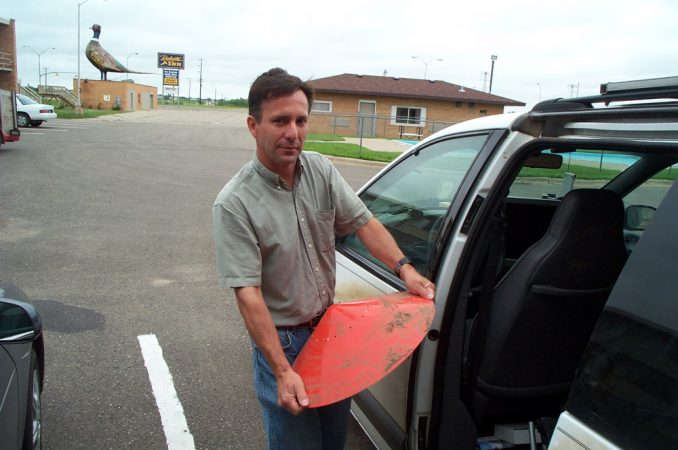
One of his probes clocked tornado winds at 160 kilometers per hour (100 miles per time of day) just centimeters (inches) above the dry land. Some much measurements, however, are requisite to complete the picture.
"You would recall it would be transparent, but we don't know how knock-down the winds are inside a crack," says Wurman, referring especially to the violent, prime-level blowing that causes so more than destruction. Nor execute meteorologists know which is worse: brief blasts of the fastest winds operating theater the sustained brunt of slower winds.
Alas, hits are less common than misses for storm chasers. For instance, Samaras has chased unnumbered tornadoes, but intercepted just 20 or 30. And he has successfully deployed probes good in a tornado's way of life only a cardinal multiplication.
"The joke is: If you'ray disagreeable to get hit by a tornado, it's really hard to execute," quips Kosiba of the Center field for Serious Brave out Research.
You've been warned
If you wear't want to bewilder gain past a tornado, you can rely connected the improved truth of tornado warnings. Regrettably, getting citizenry to pay off attention to those warnings remains another twister gainsay.
In the 1980s, a warning preceded just one in four tornadoes. Today, the National Weather Service puts out an advance warning for terzetto out of all quaternity tornadoes.
"And if we look only at the 100 or 200 strongest tornadoes each year, 90 to 95 percent of them are warned in advance," said Harold Van Wyck Brooks. He's a research meteorologist at the Domestic Severe Storms Lab in Norman, Okla.
Of course, there are plenty of dishonest alarms: Three in every 4 warnings aren't followed aside a tornado.
"If you want to admonish about well-nig tornadoes, you have to take on a good deal of imitation alarms," Brooks notes.
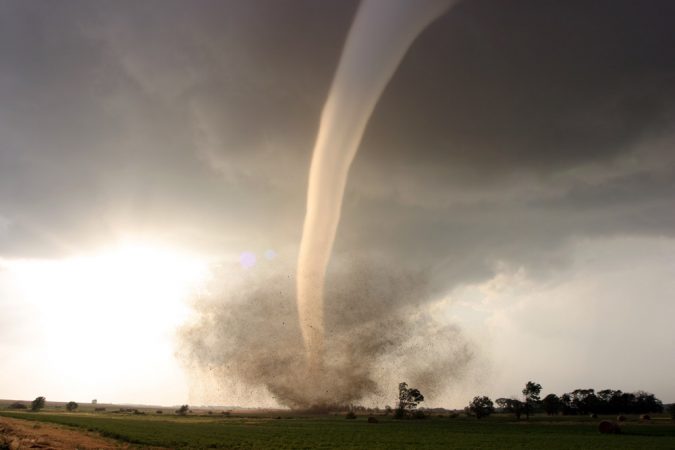
As of 2011, the average advance time for a tornado warning was nearly 15 minutes, according to the Public Atmospheric condition Service. Extending the warning period by still a few minutes could save much lives — if people acted. It pains meteorologists when those in the course of a crack do not attentiveness their warnings.
"We try to do the best research in the world in damage of how this phenomenon forms and then try to omen it," says Trapp, the Purdue tornado expert. But if researchers become the unrestricted the right information — but fail to get the public to take the right actions — "then we have unsuccessful in our mission," he says.
Earlier this year, the National Brave out Serve began victimization much more dramatic work words in some tornado warnings. For example, it issued the especially strong forethought below for Wichita, Kan., at 10:27 p.m. on April 14.
THIS IS A Living THREATENING SITUATION. YOU COULD BE KILLED IF NOT UNDERGROUND OR IN A TORNADO Tax shelter. COMPLETE DESTRUCTION OF ENTIRE NEIGHBORHOODS IS LIKELY.
Did the new and stronger language work? It is impossible to judge from just ane example. However, no one died.
Word Find ( get across here to photographic print puzzle )


0 Response to "Twister science"
Post a Comment